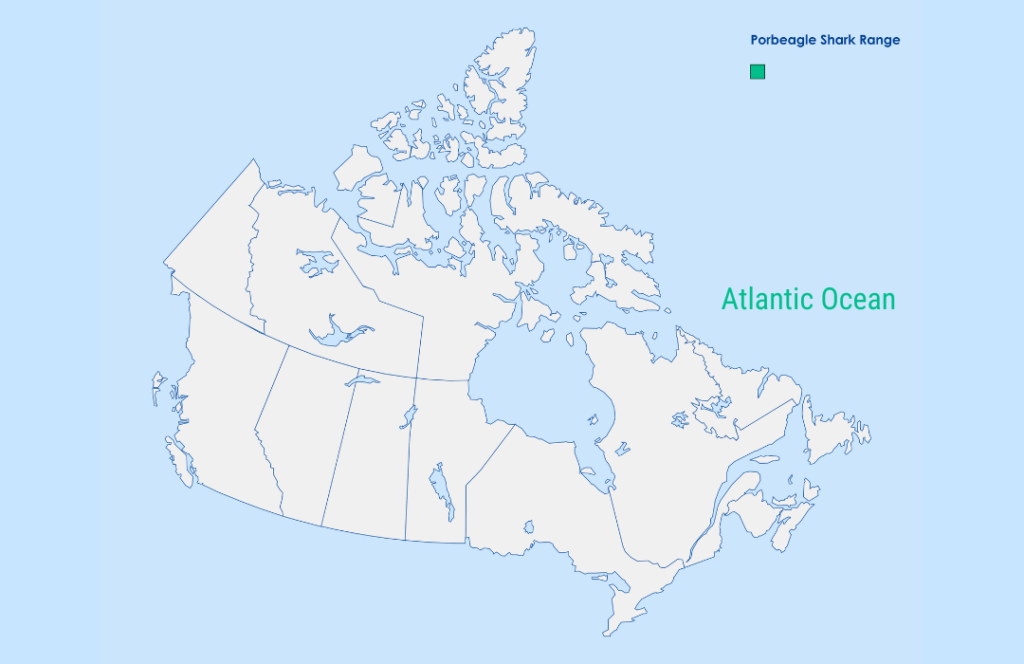
Porbeagle Shark Nature Canada
This shark has been found at all sorts of water depths, ranging from one metre to 700. Save endangered species today by joining one of our campaigns! Help End the Extinction
Vital Signs
- Common name: Porbeagle Shark
- Latin name: Lamna nasus
- Conservation Status: Endangered
- Range: Atlantic Ocean
- Life span: Estimated 26 years on average, but is believed to live for more than 40 years
- Size: Can reach a maximum of 3 metres in length

The Porbeagle Shark is either dark grey or blue-black and has a white underbelly. It has a stout head with large eyes and a large mouth. It’s been noted that this shark’s pectoral fins are twice as long as they are wide!
Porbeagle Shark Facts
- Seem to prefer cooler temperatures, and travel to stay in water that’s between 5℃ and 10℃
- Like other sharks, the eggs hatch inside the female’s stomach
- Is a warm-blooded shark and has the ability to retain body heat, which lets it live in colder water
- Lives in the open sea or close to the shore, at levels where sunlight can reach. Sharks that live in the open sea are called “pelagic” sharks
- One of the deepest diving pelagic sharks, the deepest recorded dive is 1360 metres
Threats
The Porbeagle Shark matures late and has few babies, making them vulnerable to overfishing since the population isn’t regularly restored. These sharks are caught during pelagic longline fishing, and are caught during attempts to fish for tuna and swordfish.
Currently, it’s thought that Porbeagle Shark population numbers are still dropping—and there’s fear the decline can’t be reversed.
What’s Being Done
Fisheries and Oceans Canada has been managing the Porbeagle Shark since the 1990’s. This species is also protected by the Oceans Act and the Fisheries Act, under the terms of the Atlantic Fishery Regulations (1985).
There is also the Canadian Atlantic Pelagic Shark Integrated Fisheries Management Plan, which protects Porbeagle Sharks by: prohibiting fin removal, limiting the number of fishing permits, limiting the places they can be fished, and establishing fishing seasons.
Canada has committed to the goal of protecting 30% of lands, ocean, and freshwater in Canada by 2030. This goal will help protect ecosystems, restore habitats, and fight climate change. All these things are a step in protecting Canada’s at-risk animals—so let’s hold the federal government to their promise.
How to Help
- Take Part: Become an Ocean Defender to see how you can help species like the Porbeagle Shark.
- Learn: Stay informed about endangered species by signing up for Nature Canada’s monthly e-newsletter.
- Find out more: Help us end the extinction by taking action for nature today—visit conservation websites like Nature Canada or join one of our campaigns
Resources
- COSEWIC – Assessment and Status Report
- SARA – Species Profile
Originally drafted by Melanie Furlong, a freelance writer in Lower Sackville, Nova Scotia. Updated in 2022 by Simona Casale.
Want to Help?
Hello nature life wilderness is the world’s envy. It’s our duty to keep our true north strong and green.
Donate

